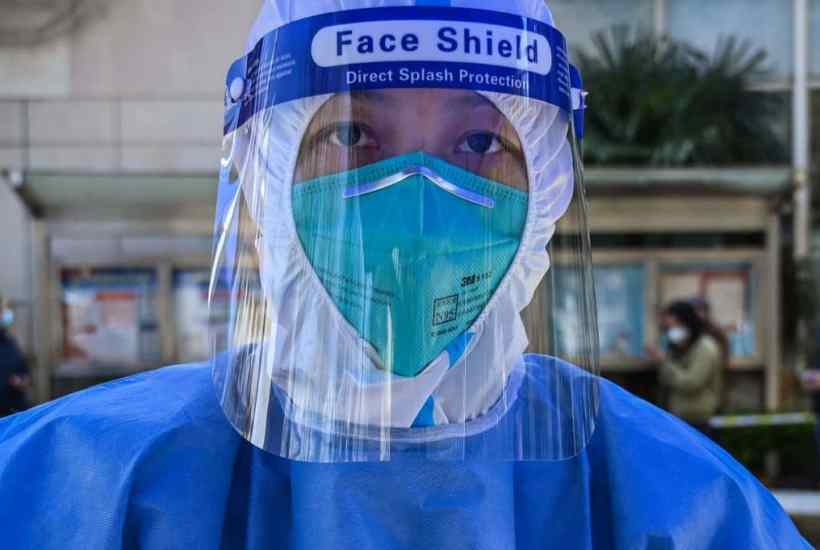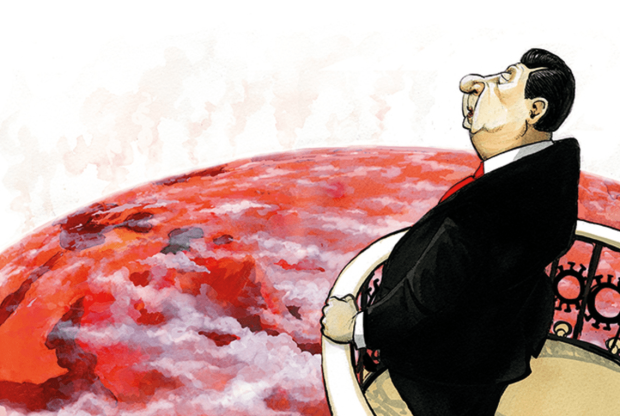‘We’re being driven mad. Nobody is listening to us. They’ve politicised this disease.’ This week, the candid remarks of Zhu Weiping, a senior official at Shanghai’s Centre for Disease Control (CDC), have gone viral in China. Her phone call with a frustrated local was recorded, and her despair resonated with people in the city and the rest of the country who are at their wit’s end with the zero-Covid policy. Shanghai is buckling: the Covid chaos there is the worst China has seen since Wuhan in 2020.
In the last two years, China’s zero-Covid policy has demonstrated the determination and effectiveness of the one-party state. Millions of people can be tested en masse. Positive cases are dragged into state quarantine. New arrivals undergo a marathon isolation period (my mother is on Day 19, having returned to Shanghai last month). But cases and deaths have been kept low. Brutal and strict it might be; the one thing zero Covid hasn’t been is chaotic. That’s all changing now.
Why? Because China’s measures to contain Covid were never designed to deal with a variant as infectious as Omicron. The daily case rate in Shanghai has tripled in a week (17,077 on Tuesday, compared to 5,982 seven days earlier). Every day, the city’s authorities are arranging the Covid-secure transportation of thousands of positive cases (and their contacts) into quarantine centres where they are supposed to serve out their isolation as a group sealed off from the world. Hospitals, gyms, apartment blocks and Shanghai’s World Expo Centre (in another era, a symbol of China’s openness rather than plague) have all been converted into quarantine centres.
Conditions can be appalling. One viral video showed a group of those locked up complaining about the dirtiness of the communal toilets at the Shanghai Expo, the lack of food, medicine and tests. Children have been split up from parents to quarantine separately. People have been spending the night in coaches that are meant to take them to quarantine centres.
Those able to stay at home have an easier time, but many remain confused and panicked. Food is a worry: most are not allowed to leave their homes to shop and online shopping has become competitive. The emergency services are exhausted and prioritise Covid cases, leading to a tragic handful of instances where those with critical illnesses have died at home instead of being seen in time.
Even on China’s sanitised social media, lockdown anger and fatigue has finally broken through. Parents are infuriated that their children are not properly cared for. One blog, written by someone who saw their neighbour die of asthma before an ambulance could arrive, advised:
‘The original post has already been deleted. Everyone, please do not tag the government because that will make sure this Weibo will also be deleted… Please do your best to copy and share on your Weibo or other social media platforms – for yourself, but also for a better future.’
Elsewhere a man was filmed escaping lockdown; striking a rather heroic look, he was seen striding through empty Shanghai streets maskless and smoking, before being bundled into a police car. In the Shanghai Expo Centre, one man was filmed shouting: ‘You can shut me away, but you can’t shut Douyin away!’ (Douyin is the Chinese version of TikTok). Social media has given a voice to the voteless. We won’t ever know how many Chinese are fed up with lockdown, but more and more people are making their voices heard.
Shanghai should be a wake-up call for the central government. The government has squandered the opportunity presented by its zero Covid strategy by failing to vaccinate more vulnerable and old people and improve medical infrastructure. For now, problem-solver and vice premier Sun Chunlan has been sent to Shanghai (she has taken charge of every single Covid hotspot since Wuhan), together with more than 38,000 healthcare workers from other provinces and 2,000 military personnel. With enough manpower and resources, China will get on top of Omicron. But at what cost?
Listen to Cindy Yu discuss the power of China’s social media platforms on the Chinese Whispers podcast:
Got something to add? Join the discussion and comment below.
Get 10 issues for just $10
Subscribe to The Spectator Australia today for the next 10 magazine issues, plus full online access, for just $10.




















Comments
Don't miss out
Join the conversation with other Spectator Australia readers. Subscribe to leave a comment.
SUBSCRIBEAlready a subscriber? Log in